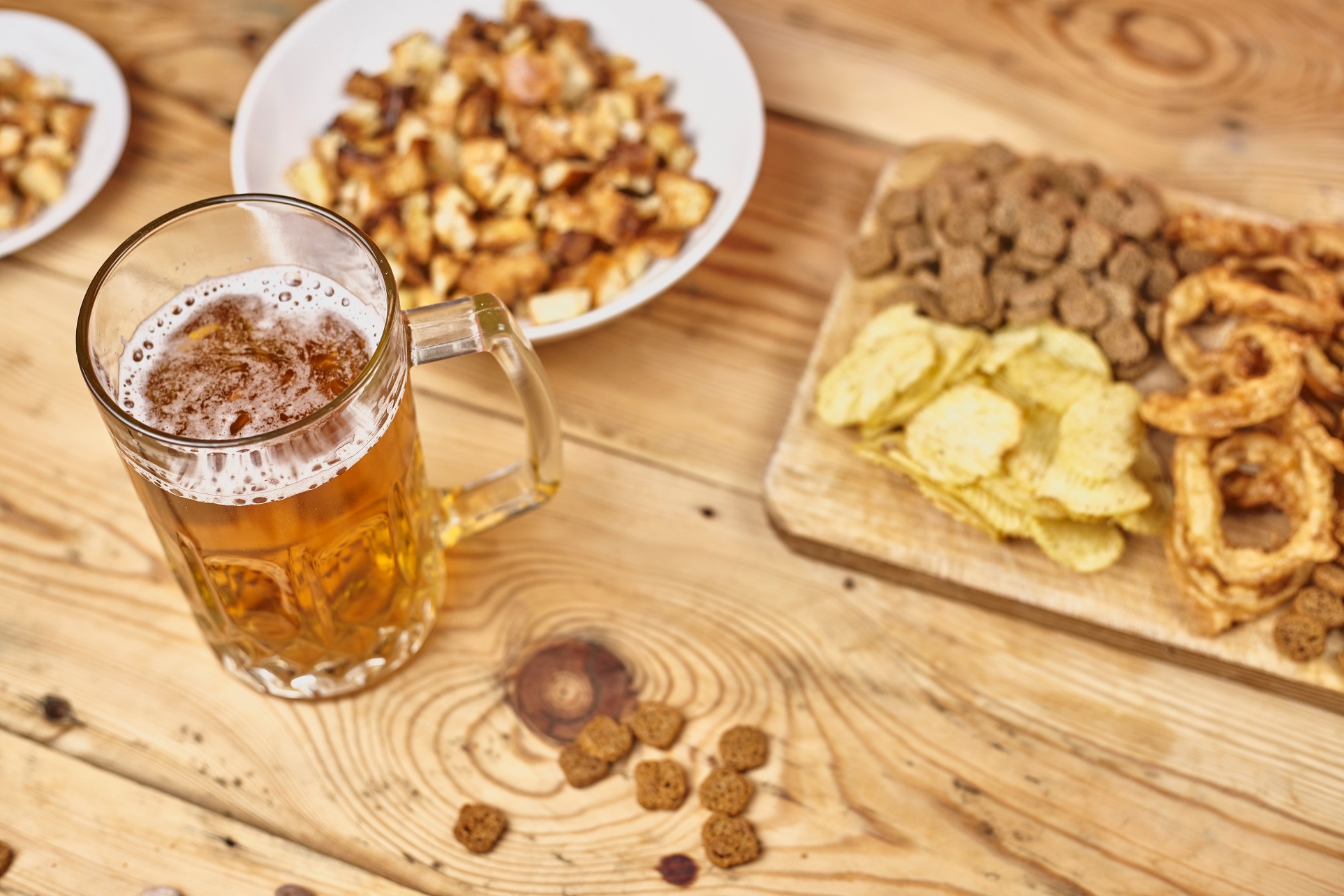Belgian beers are famous for their wide range of flavour profiles, from fruity to floral to funky. This can make it difficult for consumers to know whether the unique flavour in their beer was intended by its brewer or whether there’s been a flaw in production that pushes it outside of style parameters, or worse, into a zone of undrinkability.
The brewer’s goal is to find a specific profile of flavours and aromas that define their beer's unique character. But this intricate balance can be disrupted by the presence of off-flavours –unintended and often unwanted features that can detract from the quality and enjoyment of the beer.
Off-flavours can originate at various stages in production, from hot-side brewing and fermentation through to packaging and storage. They can range in severity from subtle to overtly offensive, potentially compromising the integrity of the final product. For brewers, identification, understanding and prevention of these off-flavours are key tasks, but for casual drinkers and beer enthusiasts alike, it can be empowering to know why your beer doesn’t taste quite right.
Most off-flavours in beer occur naturally, and often as normal reactions during fermentation. Some are even necessary in certain beers, and a few are actually characteristic of specialist styles. Think of the spiciness of a Saison, the apricot fruitiness of a Tripel, the acidity of an Oud Bruin, and the green apple character of a Lambic. They become off-flavours only when present in high concentrations or when inappropriate for the style.
Some of these undesirable flavours can also be taints and there is a technical distinction amongst brewers between an off-flavour in beer (which is imparted through internal deteriorative change) and a taint (imparted through external sources). The usefulness of this distinction is more a matter of determining the cause of the taint or off-flavour in beer so it can be quickly remedied - which is why we’re bundling off-flavours and taints so you can quickly get to the bottom of why your beer doesn't taste the way it should.
Here are 15 common off-flavours in beer, how you can identify each of them, and what the causes for each tend to be.
- My beer smells of butter
Off-flavour: Diacetyl
Chemical name: 2,3-butanedione
How to identify: It smells like butter, butter popcorn, or butterscotch and can present with a slickness or creaminess on the tongue and in the mouth.
What it is: Referred to as brewing’s original sin, diacetyl is in most beers at some concentration and is a natural part of the brewing process. It can be desirable in small amounts in stouts and ales but is generally regarded as a flaw in most lagers.
How it is caused: Diacetyl is naturally produced by all yeast during fermentation and is then ‘reabsorbed’ by yeast cells. Any diacetyl that is not reabsorbed may be a result of either high flocculating yeast, weak or mutated yeast, issues with oxygenating, low fermentation temperatures, or short boils.
- My beer smells of sweetcorn
Off-flavour: DMS
Chemical name: Dimethyl sulphide
How to identify: Smell like sweetcorn, cooked cabbage, tomato sauce, and even shellfish or oysters.
What it is: DMS is a desirable flavour in some pale lager beers and ales and an off-flavour in other beers.
How it is caused: Compounds are created during the malting process of grain which are later converted to DMS when heated. It is therefore primarily formed during wort production and, to a lesser extent, during fermentation. This makes DMS naturally more prevalent in pale ales and lagers and it can also be produced from bacteria that have managed to contaminate the beer. It can be driven off through evaporation when boiling wort.
- My beer smells of metal
Off-flavour: Metallic
Chemical name: Ferrous sulphate
How to identify: Smell of iron (or other metals), pennies, ink, or blood. While the smell can be clear, it is worth tasting this one as you can feel it in your mouth and on your teeth. You can also try rubbing a little of the beer onto the back of our hands where you suspect metallic off-flavours, as it sometimes delivers a very strong metallic odour and makes it a lot easier to identify.
What it is: Ferrous sulphate is a taint and occasionally an off-flavour in beer. It primarily affects beer mouthfeel but sometimes beer odour can also be affected.
How it is caused: This taint occurs when beer or raw materials come into contact with poor-quality metal pipework or machinery, particularly by wort being boiled in unprocessed metals (excluding stainless steel). It can also be imparted via packaging – such as metal cans, bottle caps or kegs. Improperly stored grains can also cause metallic off-flavours.
- My beer smells of rotten eggs
Off-flavour: Sulfidic
Chemical name: Hydrogen sulfide (H2S)
How to identify: Smell of boiled or rotten eggs, a burning match or raw sewage.
What it is: H2S is present in all beers and concentrations vary considerably from beer to beer. H2S is an off-flavour in most beer styles but it is a signature flavour character in Burton ale from the UK.
How it is caused: Hydrogen sulphide is produced naturally by all yeast during fermentation. Lager yeasts tend to create greater sulphur aromas than ale strains. At low levels, it can impart a fresh flavour to beers but at high concentrations, it becomes an off-flavour. CO2 will carry most of the hydrogen sulphide away, so conditioning or lagering after primary fermentation can ensure any leftover sulphur smells or tastes fade over time.
- My beer smells of banana
Off-flavour: Estery
Chemical name: Isoamyl acetate
How to identify: Smell of banana or pear drops and to a lesser extent, strawberry, raspberry, and grapefruit.
What it is: Isoamyl acetate is a common ester flavour present in all beers. Concentrations vary considerably from beer to beer. It is a key flavour character in some lagers and ales and a signature flavour character in German-style wheat beer (Hefeweizens) and many Belgian ales.
How it is caused: This is a naturally occurring by-product of fermentation. Strong fruity flavours or fruity flavours that are inappropriate for the style of beer are sometimes a result of under pitching or high fermentation temperatures. As a rule, the higher the fermentation temperature, the more esters the yeast will produce. Low oxygen levels can also help increase the production of esters.
- My beer smells skunky
Off-flavour: Lightstruck
Chemical name: 3-methyl-2-butene-1-thiol / Mercaptan
How to identify: Smell like a skunk or freshly-brewed coffee. It can also smell musty and be similar to burned rubber or cat musk. Have you ever been sprayed by a skunk?
What it is: Lightstruck character is an off-flavour associated with exposure to light of beer packaged in clear or green glass. Light-coloured beers and beers with a lot of hops are more prone to becoming skunky. Beers that have been bittered exclusively with chemically-modified hop bitter acids do not develop this flavour (think Heineken in its green bottle). Dark beers and beers that utilise isomerised hop extracts are less susceptible to becoming lightstruck.
How it is caused: When hops are exposed to ultraviolet rays from sunlight or flourescent lights, the alpha acids break down and react with the hydrogen sulphide produced by the yeast. This reaction creates mercaptan. Mercaptan is the same chemical skunks secrete when they spray which is why the smell of light-struck beer is like that of a skunk.
- My beer smells like paper
Off-flavour: Oxidised
Chemical name: trans-2-nonenal
How to identify: Smell like stale or old wet cardboard or have a papery taste or smell.
What it is: Nonenal is an off-flavour in beer associated with ageing. Formation of this off-flavour is more pronounced when precautions have not been taken to minimise oxidation. An excessive level of oxygen being introduced to the beer, especially while wort is still warm or after fermentation is complete, can create cardboard or sherry-like flavours.
How it is caused: Oxidation occurs when oxygen negatively reacts with the molecules in the wort or beer. It can be difficult to avoid because aeration of wort before pitching yeast is necessary. It is almost always a result of unnecessary splashing of fermented beer (i.e. transferring beer from one vessel to the next). Too much headspace in bottles can also lead to oxidation.
- My beer smells musty
Off-flavour: TCA
Chemical name: 2,4,6-trichloroanisole
How to identify: This one smells like mould, corked wine or a damp cellar. We all felt it was really like walking down into Franklin and Kim’s (impressive) beer cellar or sniffing the cork from a wine bottle.
What it is: TCA is a chemical created by mould which consumes chlorinated phenols and metabolises them and it can be detected by humans at extremely low levels.
How it is caused: TCA is usually caused when beer is fermenting somewhere that is damp or where the grain has developed mould in storage, but it is also capable of migrating through most semi-porous packaging and thus cross-contamination can occur across several areas of beer production, from raw materials to final packaging.
- My beer smells like cloves
Off-flavour: Phenolic
Chemical name: 4-vinyl guaiacol
How to identify: Smells and tastes of cloves but can also assume some of the characteristics of cough syrup, smoke and some other spices and herbs.
What it is: Key flavours in some ales and stouts but generally regarded as off-flavours in beers that are bottom fermented. It can be a signature flavour in some beers, including German-style wheat beers.
How it is caused: Phenolic flavourings are normally due to the presence of wild yeasts during fermentation or down to the use of specialised yeasts. Additional sources of phenolic flavour occur due to bacterial action from poor hygiene and contamination of raw materials to phenolic compounds.
- My beer smells like green apples
Off-flavour: Acetaldehyde
How to identify: Tastes and smells like green apples, rotten apples, emulsion paint, or freshly cut pumpkins.
What it is: Acetaldehyde is a naturally occurring chemical produced by yeast during fermentation in all beers. It is usually converted into ethanol alcohol, although where not enough yeast has been pitched or when dealing with higher alcohol beers, this process may take longer. It is a characteristic flavour of some beer styles (e.g. Bière de Garde) but is considered an off-flavour at high concentrations in beer.
How it is caused: This off-flavour is caused when the yeast does not have enough time to convert the acetaldehyde into ethanol due to either a lack of fermentation time, not enough yeast for the wort, or low-quality yeast. It can also be because of packaging problems in bottles.
- My beer smells like baby sick
Off-flavour: Butyric acid
How to identify: Smells putrid or rancid, like baby sick.
What it is: Butyric off-flavour is a highly noticeable flavour that stinks of baby sick. Unsurprisingly, it is considered an off-flavour in all beers.
How it is caused: Butyric acid is caused mainly by bacteria during the wort production phase but it can also be produced by bacteria when beer becomes spoiled once it’s been packaged.
- My beer smells like vinegar
Off-flavour: Acetic
How to identify: Smells like vinegar, acidic, or spoiled beer and can be tasted on the sides of the tongue towards the back of the mouth.
What it is: Acetic is a vinegar or acid flavour that is found in all beers at some levels of concentration. It is present in lagers, ales, stouts, and wheat beers as a normal component of a balanced flavour – think of lambic beer which has been purposefully exposed to specific types of wild yeast and bacteria. However, it becomes an off-flavour in most beers when present at high concentrations.
How it is caused: Acetic is produced by yeast in fermentation and is a natural part of the brewing process. It can also be imparted by wild yeasts which produce far more acetic acid than other yeasts and will shift the flavour profile of the beer. Extremely sour or vinegary flavours are almost always the result of a bacterial or wild yeast infection. Acetic acid can also be produced by bacterial consuming sugars and indicates spoilage of the beer or more problematic issues.
- My beer smells like cheese
Off-flavour: Cheesy
Chemical name: Isovaleric
How to identify: Smells like stale cheese or sweaty socks.
What it is: Isovaleric flavour notes are characteristic of some beer styles, e.g. India pale ale (IPA). Typical cheesy characters are often associated with beers of very high bitterness. In pale lager beers, isovaleric character is regarded as an off-flavour.
How it is caused: Isovaleric off-flavours are generally introduced by old hops. The compound arises as hops age and lose their bitter alpha acids, producing a flavour typified by flavours of cheese, sweat or must.
- My beer smells like mouthwash
Off-flavour: Chlorophenol
Chemical name: 2,6-dichlorophenol
How to identify: Smells like mouthwash, band-aid, antiseptic or disinfectant, and has a medicinal or hospital characteristic.
What it is: It is imparted to beer by the external contamination of either brewing raw materials or packaging materials with chlorophenols – for example, where chlorinated water has been used to brew or rinse equipment that has come into contact with beer.
How it is caused: It can be caused by poor rinsing processes within the brewery during the cleaning phase meaning that raw materials of beer become introduced to chlorophenols. It can also occur in beer delivery lines if they haven’t been rinsed correctly.
- My beer smells tannic
Off-flavour: Astringency
How to identify: A dry, grainy, mouth-puckering, tannic sensation. Think of sucking on a wet tea bag or a grape skin.
What it is: Astringency gives a puckering sensation, almost powdery or metallic in the mouth. It can also be tart, vinegary, tannin-like and drying.
How it is caused: Polyphenols or tannins are the number one cause of such off-flavours in beer. Tannins are found in the skins or husks of the grain as well as in the skin of fruit. Steeping grain for too long or grain that has been excessively milled or crushed can release tannins. Over-hopping can also lend a hand in creating astringent qualities.




